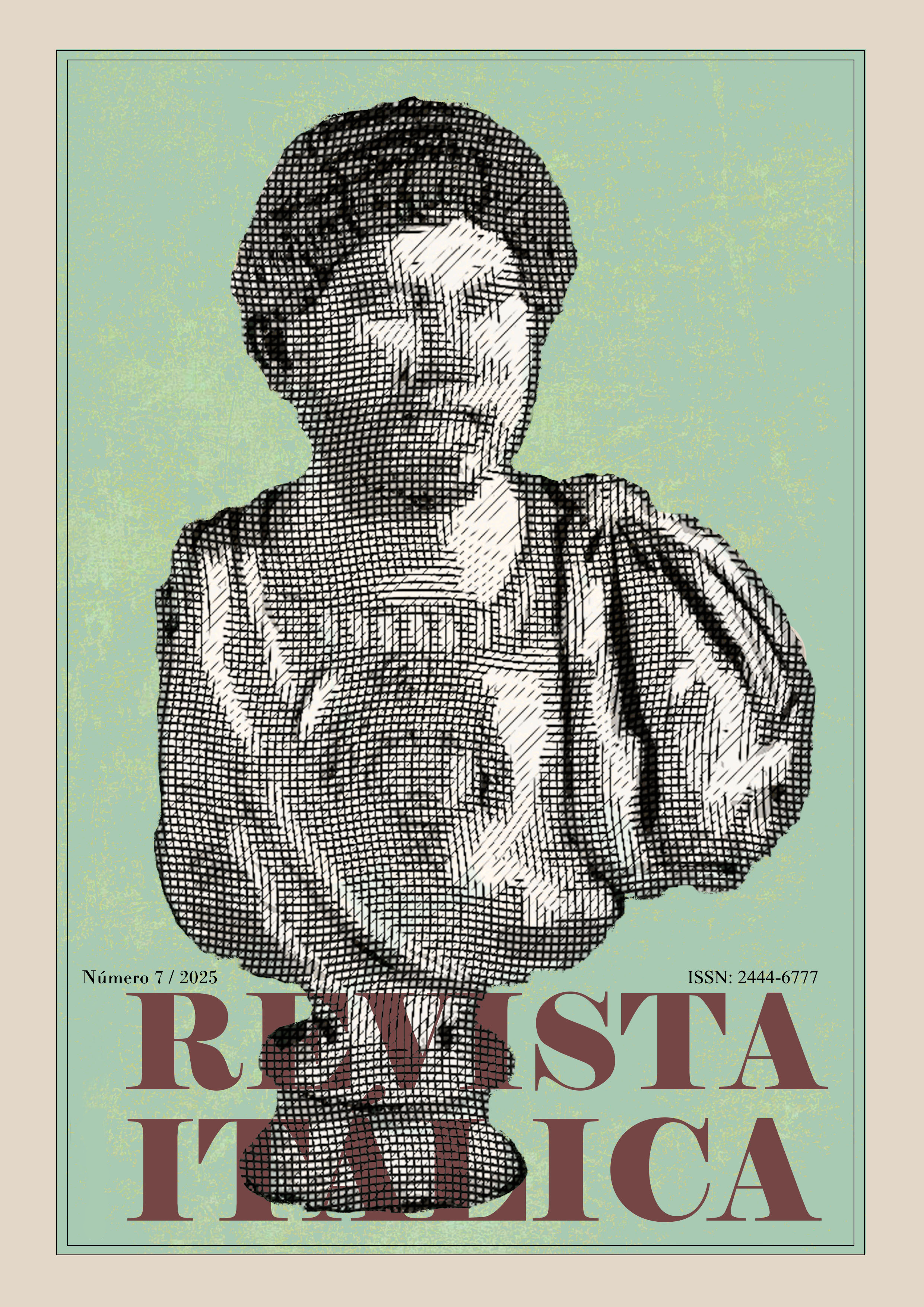The rise to rower of Emperor Lucius Septimius Severus: Ambition, strategy and power in late 2nd Century Rome
Keywords:
Septimius Severus, Septimii, African emperor, Severan dynasty, civil warsAbstract
The aim of this article is to analyse the rise to power of Lucius Septimius Severus, an emperor who occupied the imperial throne in the last years of the 2nd century, at a time when theEmpire was undergoing a structural crisis that led to the appointment of four simultaneous emperors and ended with a civil war. The victorious general was Septimius Severus, who held imperial power between 193 and 211, giving rise to thefourth and last great dynasty of emperors of the Principate. Through his reformist policies, this Caesar restored stability to the Empire. This paper explores, through the study of classical sources and a wide range of specialized bibliography, the steps taken by Septimius Severus on his path to imperial power
Downloads
References
BARNES 1967: T. D. Barnes, "The Family and Career of Septimius Severus", Historia: Zeitschrift für Alte Geschichte, 16 (1), pp. 87-107.
BIRLEY, A. R. (2012): Septimio Severo: El emperador africano, 3º Edición, Madrid, Editorial Gredos.
CAMPBELL, B. (2008): "The Severan dynasty", en A. K. Bowman, P. Garnsey y A. Cameron (eds), The Cambridge Acient History: The Crisis of Empire, A.D. 193-337, XII, 2ª Edición, Cambridge, Cambridge University Press, pp. 1-15.
CEULENEER, A. De (1880): Essai Sur La Vie Et Le Règne De Septime Sévère, Roma, L'Erma di Bretscdeider (1970, Reimp.).https://doi.org/10.3406/marb.1880.1779
DAGUET-GAGEY, A. (2000): Septime Sévère: Rome, l'Afrique et l'Orient, París, Éditions Payot.
DI VITA-ÉVRARD, G. (1963): "Un 'nouveau' proconsul d'Afrique, parent de Septime-Sévère: Caius Septimius Severus", Mélanges d'archéologie et d'histoire, 75 (2), pp. 389-414.https://doi.org/10.3406/mefr.1963.8834
Fernández Ardanaz, S. y González Fernández, R. (2006): "El consensus y la auctoritas en el acceso al poder del emperador Septimio Severo", Antigüedad y cristianismo: revista de estudios sobre antigüedad tardía, 23, pp. 23-38.
HASEBROEK, J (1893): Untersuchungen zur Geschichte des Kaisers Septimius Severus, Nueva York, Arno Press (1975, Reimp.).
KIENAST, D., ECK, W. y HEIL, M. (2017): Römische Kaisertabelle. Grundzüge einer römischen Kaiserchronologie, 6ª Edición, Alemania, Darmstadt: WBG.
LE GALL, J. y LE GLAY, M. (1995): El imperio romano, el alto imperio romano, desde la batalla de Actium hasta la muerte de Severo Alejandro (31 a.C.- 235 d.C.), Madrid, Ediciones Akal.
LETTA, C. (1991): "La dinastía dei Severi", Storia di Roma (2), pp. 656-659.
Marques Gonçales, A. T. (2003): "Imagens oníricas e o poder imperial dos Severos na Roma antiga", en D. O. Amarante dos Santos y M. Z. Turchi (eds.), Encruzilhadas do imaginário: ensaios de literatura e história, Cânone, Goiânia, pp. 27-48.
PLATNAUER, M. (1918): The Life and Reign of the Emperor Lucius Septimius Severus, Roma, L'Erma di Bretschneider (1965, Reimp.).
POTTER, D. (2009): "Septimio Severo", en A. A. Barret (ed.), Vidas de los césares, Barcelona, Editorial Crítica, pp. 327-360.
RUBIN, Z (1980): Civil-War Propaganda and Historiography, Bruselas, Latomus.
Sage, M (2020): Septimius Severus and the Roman Army, Filadelfia, Pen & Sword Books Ltd.
SOUTHER, P. (2015): The Roman Empire from Severus to Constantine, 2ª Edición, Londres, Routledge.https://doi.org/10.4324/9781315713083
SYVÄNNE, I. (2023): Emperor Septimius Severus: The Roman Hannibal, Filadelfia, Pen & Sword Books Ltd.

Downloads
Published
How to Cite
Issue
Section
License
1. Authors retain copyright and grant the journal the right to be the first to publish the work and to do so under a "Creative Commons Attribution-NonCommercial 3.0 Spain" (CC-by-nc-sa) licence, unless otherwise indicated.
2. This licence allows others to share, copy, distribute and publicly communicate the work, as well as to make derivative works as long as the work is attributed to the author(s), is not used for commercial purposes and is shared under the same licence.
You can consult the informative version and the legal text of the licence here. This must be expressly stated in this way when necessary.
3. Authors may separately enter into additional agreements for the non-exclusive distribution of the version of the work published in the journal (e.g. placing it in an institutional repository or publishing it in a book), with an acknowledgement of its initial publication in this journal.
4. Authors are allowed and encouraged to disseminate their work electronically (e.g., in institutional repositories or on their own website) before and during the submission process, as it may lead to productive exchanges, as well as earlier and higher citation of published work (see The Effect of Open Access).

 Universidad Pablo de Olavide
Universidad Pablo de Olavide